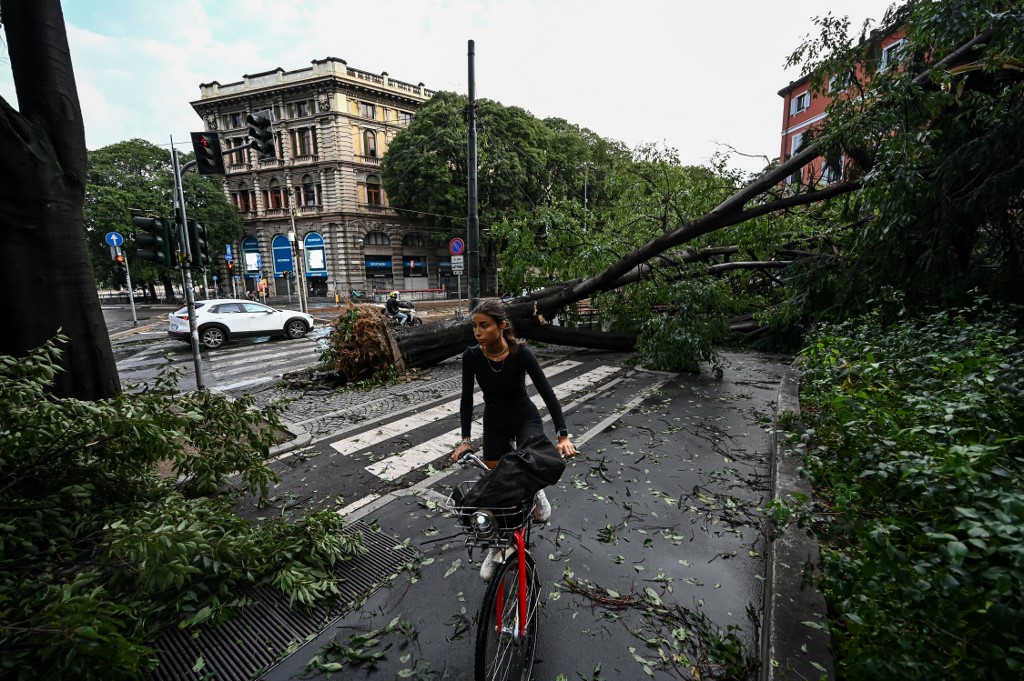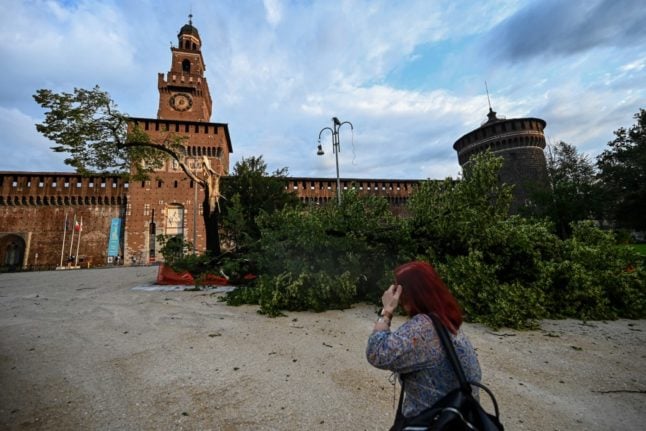The teenager was killed when a tree fell on her tent during a scout camp near Brescia, after high winds and torrential rain overnight.
On Monday, a woman died after also being hit by a falling tree in Lissone, north of Milan.
Meloni confirmed the two “tragic” deaths due to bad weather and offered her thoughts to their loved ones in posts on social media.
Milan residents reported torrential rain and hail in the early hours of Tuesday morning, which flooded streets and uprooted trees, many of which fell onto parked cars.
Transport authorities reported serious damage to the city’s electricity network, while an AFP journalist said water in the historic centre was temporarily shut off.
Firefighters said the situation in Milan was “very serious”, reporting more than 200 calls for help across the city since 4am.

But even as the north was drenched, the heatwave across the south persisted with temperatures of 47.6 degrees Celsius (117 degrees Fahrenheit) recorded in the eastern Sicilian city of Catania on Monday.
READ ALSO: Blackouts, water shortages, wildfires: How extreme heat is hitting Sicily
Firefighters on the island spent a night battling wildfires, one of which approached so close to Palermo airport that it shut down for several hours on Tuesday morning.
Italy’s Civil Protection Department on Tuesday reported “extensive fires” across the south, saying air support had been requested for nine incidents in Sicily, nine in Calabria and another in Sardinia.
“We are experiencing in Italy one of the most complicated days in recent decades — rainstorms, tornadoes and giant hail in the north, and scorching heat and devastating fires in the centre and south,” said Civil Protection Minister Nello Musumeci.
Writing on Facebook, he added: “The climate upheaval that has hit our country demands of us all… a change of attitude.”



 Please whitelist us to continue reading.
Please whitelist us to continue reading.
Member comments